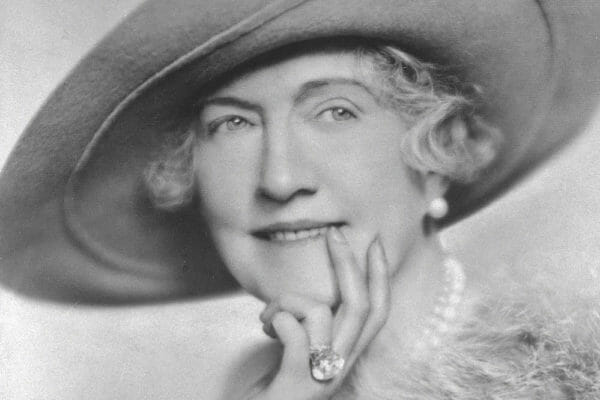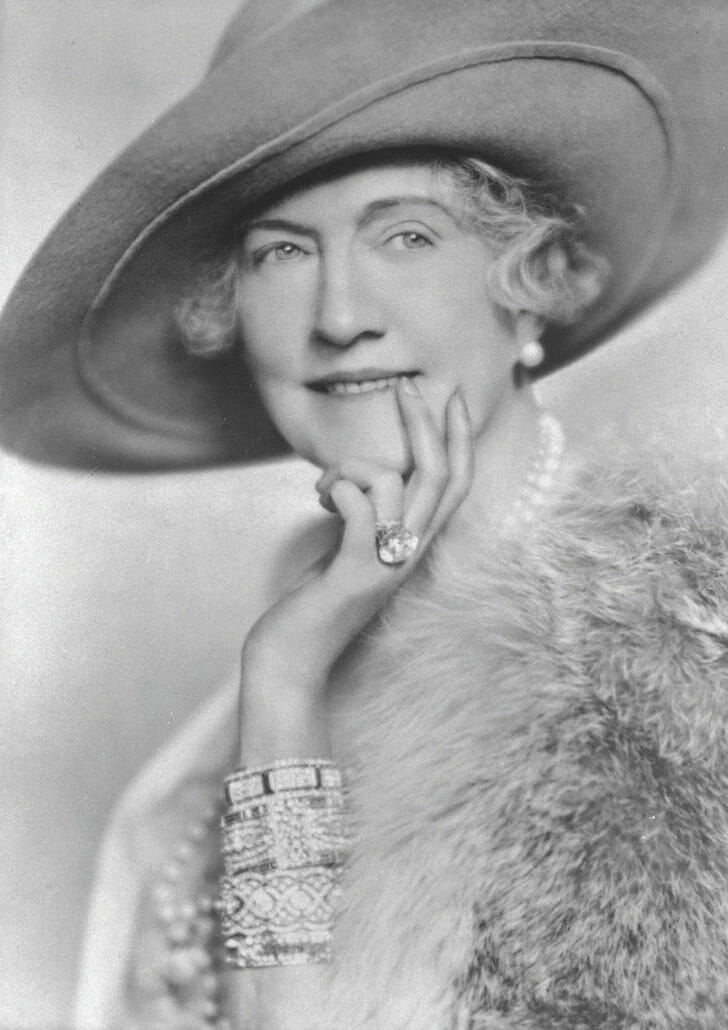
The Silver Queen of Park City
The story of Susanna Bransford Emery Holmes Delitch Engalitcheff
Summer 2022
Written By: Darby Doyle | Images: Courtesy Park City Historical Society S& Museum, Raye Ringholz Collection
Socialite, fashion icon, businesswoman by way of self-preservation, European royal by marriage, and embodiment of the Gilded Age.
Meet America’s Silver Queen: Susanna Bransford Emery Holmes Delitch Engalitcheff. During her 83 years of life, she was widowed four times, traveled the world, and had gained and almost entirely lost a fortune worth millions.
In 1859, Susanna Egera Bransford — called Susie by her closest companions — was born to a once-prosperous Missouri family who immigrated to California’s mining country. Intrigued by the potential of Park City, as described by family friends, Susie moved to Utah in 1884 at the age of 25. Shortly thereafter, she met and married the love of her life: the 38-year-old Albion Emery. Universally admired around town, Albion worked as a bookkeeper for the mining company, briefly served as Park City’s postmaster, and was a popular and knowledgeable Freemason.
Albion also speculated in mining, including a partial ownership of the Mayflower Mine that proved to be fortuitous. In 1892, the Mayflower Mine’s stockholders incorporated Silver King Mine leases and practically overnight, Susie and Albion became millionaires.
With their newfound wealth, the Emerys moved to the relative refinement of Salt Lake City. Albion became involved in politics and Susie was a lively hostess. They adopted a 2-year-old daughter, Grace, who idolized Albion. In this time of prosperity, however, Albion’s health deteriorated, and he died in 1894 leaving no will clarifying his financial assets and their executorship.

Within months of his death, fellow Silver King Mine owner R.C. Chambers sued Susie for a large portion of the Emery estate, claiming that Albion had received the original mine shares only due to R.C.’s generosity.
Although the courts determined that Susie and the then 8-year-old Grace were the rightful inheritors of the Silver King Mine holdings, the damage to Susie’s reputation was substantial. The public mudslinging portrayed Susie as an ungrateful, greedy, nouveau riche upstart.
Susie took the reins of her fiscal independence with gusto and became even more wealthy a few years later when she married a fellow widower and self-made multi-millionaire, Colonel Edwin F. Holmes. The extravagance of the couple’s spending — with multiple residences, jewels, couture clothing, and luxury travel — was followed by the mining bust and the sharp decline of their finances. After Edwin’s death in 1925, Susie continued spending in order to keep up with the appearance of her old lifestyle, even with little coming into the coffers.
She had a brief, tempestuous marriage to a man 30 years her junior, the Serbian surgeon and international playboy Dr. Radovan “Rada” Delitch. Reputedly fearing the fallout of divorce, Rada committed suicide during a cross-Atlantic trip and was buried at sea.
Susie’s wealth all but evaporated during the Great Depression. In 1933, her El Roble estate in Pasadena, California was liquidated at public auction. Drawn by the anticipated spectacle, 25,000 people flocked to gawk at her Rolls-Royce, art collection, and elaborate furnishings, most of which were sold to the crowd at fire sale prices.
Shortly thereafter, Susie (now 74) married Nicholas Engalitcheff, an impoverished, expat Russian prince (aged 59). Their short union was punctuated by his infidelity and their long bouts of separation until his death by stroke in 1935.
In their book, The Silver Queen, biographers Judy Dykman and Colleen Whitley note that at long last, Susie was finally accepted into the elite and monied circles she admired, but at a great cost. “She would finish her life as did so many women who had outlived the Gilded Age — in near-constant travel, worrying that their money would not last, but doing nothing to economize so that it would.”

